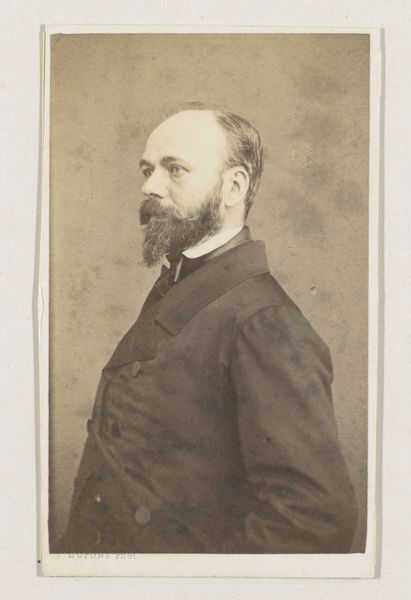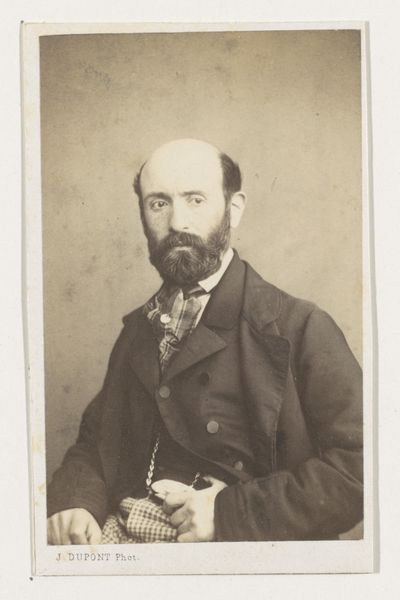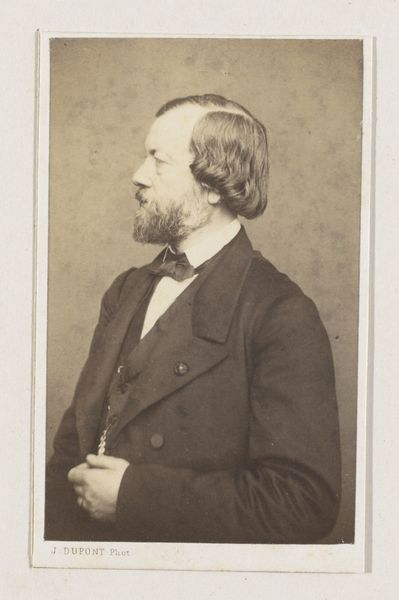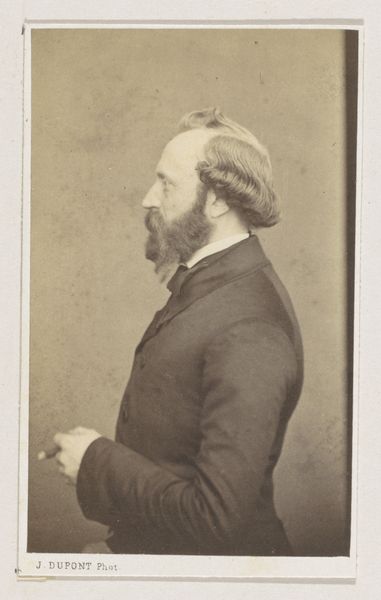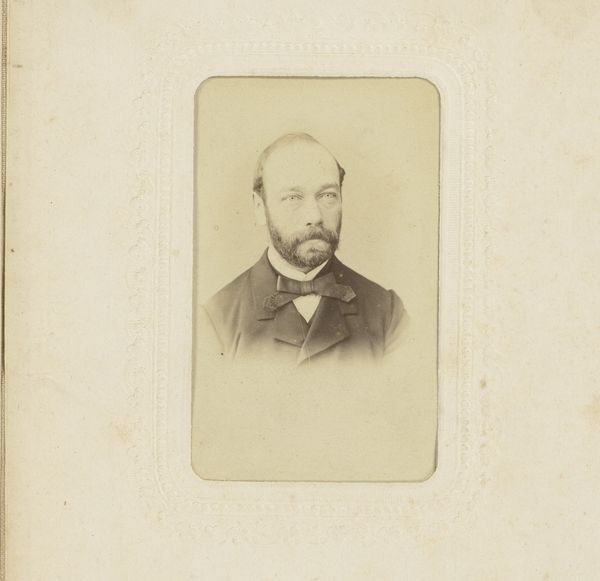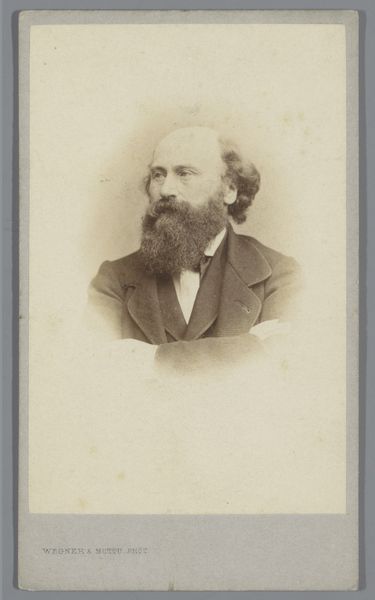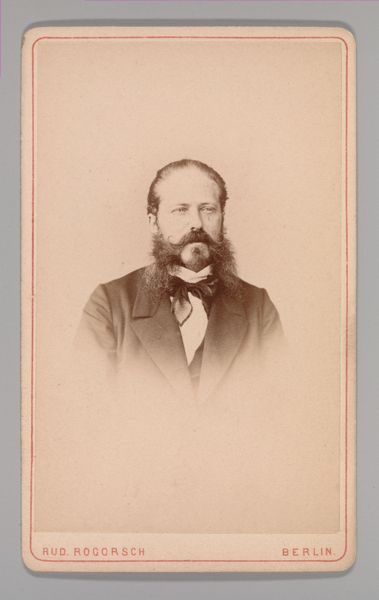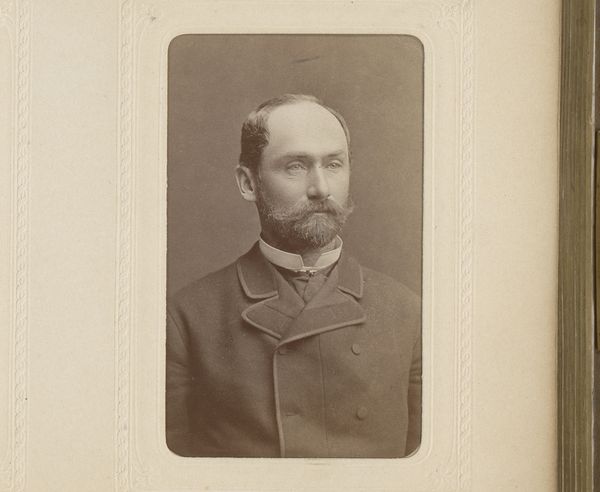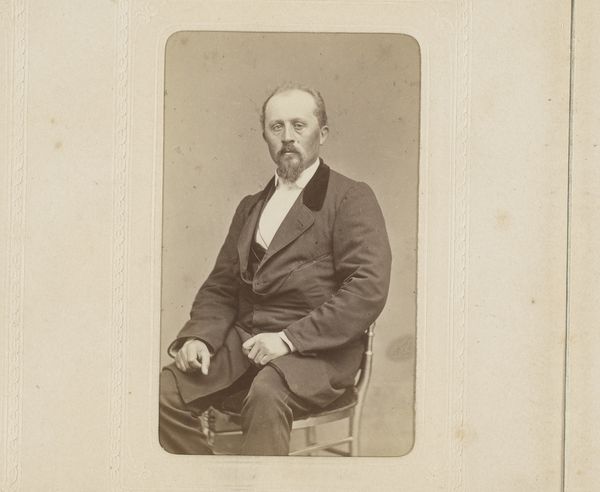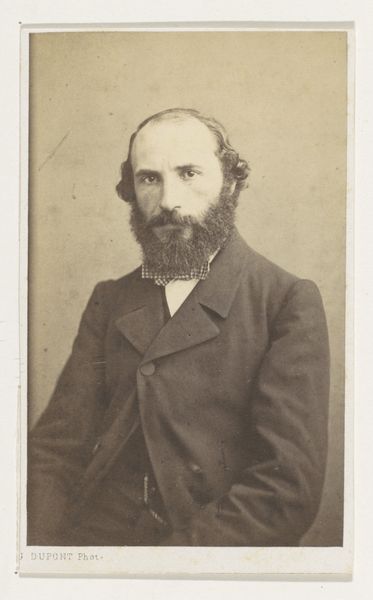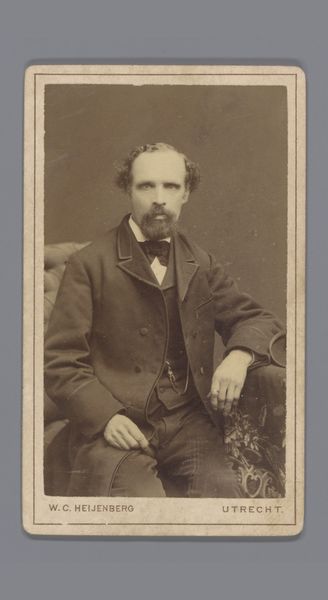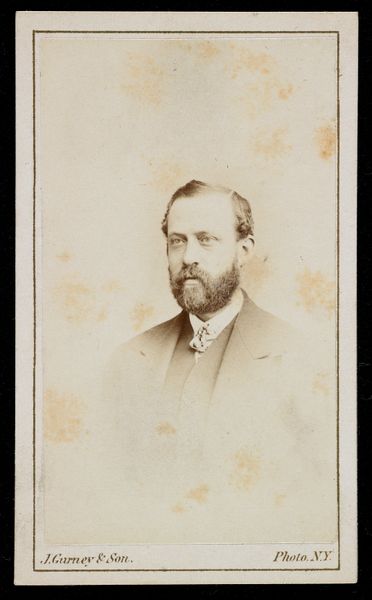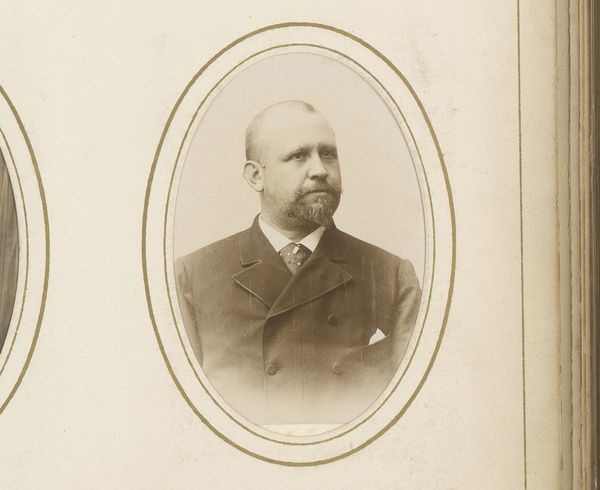
Dimensions: height 87 mm, width 53 mm
Copyright: Rijks Museum: Open Domain
Curator: I'm immediately struck by the overall sepia tone—it lends the piece a sense of history and distance. The subject is well-groomed; there’s an intriguing intensity in his gaze. Editor: Indeed. Here we have a gelatin-silver print, "Portret van een man met snor en baard", which translates to "Portrait of a man with a mustache and beard," attributed to Friedrich Stussak and created sometime between 1860 and 1900. Consider the societal norms of the time: how portraiture was linked to notions of power, class, and masculine identity. Curator: Precisely. Notice how the lighting accentuates the beard. It almost becomes the focal point. Its carefully sculpted form implies a certain status—perhaps even a performance of masculinity dictated by Victorian-era ideals. Editor: We must think of this portrait's function as a signifier. It would have been a conscious representation meant for public consumption. Consider his formal attire and the photographic process itself; portraiture democratized image production, offering a glimpse into the aspirations and self-fashioning of the burgeoning middle class. Curator: It makes you wonder about his story. Was it meant to commemorate an accomplishment, perhaps signal a particular socio-economic position, or preserve memory in a world where photography was not commonplace? The slight blurring also gives it a vulnerable humanity. Editor: Right. What about his relationship to dominant political or social movements? Could the beard represent a rejection of aristocratic styles or even be tied to proto-nationalist sentiments percolating throughout Europe during that period? The aesthetic codes used tell the whole story. Curator: I find myself lingering on the tonal gradations from light to dark. They reveal the inherent possibilities that lie within monochrome and make for quite an impactful statement. Editor: Through the convergence of form, process, and context, a seemingly straightforward portrait transforms into a lens through which we can study a period of transformation. Curator: Exactly. In viewing this photograph, we're able to acknowledge the power that objects yield for identity and representation across generations. Editor: A fascinating artifact of human intention and aesthetic expression.
Comments
No comments
Be the first to comment and join the conversation on the ultimate creative platform.
